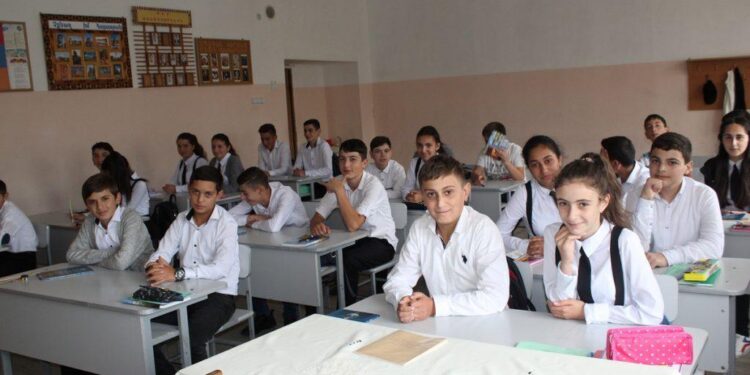As the Armenian-American community in California continues to grow and evolve, the demand for culturally rich education has never been greater. In response, efforts to expand Armenian schools across the state are gaining momentum, aiming to strengthen the community’s heritage and ensure future generations remain deeply connected to their language, history, and identity. This article explores the critical importance of these educational initiatives, highlighting how expanding Armenian schools in California serves not only as a means of preserving cultural roots but also as a vital investment in the community’s long-term resilience and unity.
The Growing Demand for Armenian Education in California Communities
Across California, there has been a noticeable surge in families seeking Armenian education for their children, reflecting a broader desire to preserve cultural identity amid an increasingly globalized environment. Communities in cities such as Los Angeles, Glendale, and Fresno report steady enrollment growth in Armenian schools, highlighting the vital role these institutions play beyond academics. These schools are becoming hubs for language preservation, cultural celebrations, and intergenerational connections, fostering a strong sense of belonging among younger generations who might otherwise be distanced from their heritage.
Several factors contribute to this upward trend, including:
- Demographic shifts: Growing Armenian populations in suburban neighborhoods have created new demand for accessible Armenian education.
- Parental engagement: Parents increasingly prioritize bilingual fluency and cultural literacy as essential components of their children’s upbringing.
- Community investment: Local organizations and philanthropic efforts continuously support the expansion and enrichment of Armenian schooling programs.
| City | Enrollment Growth (2020-2023) | New Armenian Programs |
|---|---|---|
| Glendale | +18% | After-school cultural workshops |
| Los Angeles | +22% | Language immersion classes |
| Fresno | +15% | Community heritage clubs |
Challenges Facing Armenian Schools and Strategies for Sustainable Growth
Armenian schools in California grapple with a range of obstacles that impede their potential for long-term sustainability. Limited funding remains a critical issue, often forcing institutions to rely heavily on tuition fees and community donations, which are not always consistent. Additionally, demographic shifts and the assimilation of younger generations present ongoing challenges in maintaining student enrollment levels. The scarcity of qualified teachers fluent in Armenian culture and language adds another layer of complexity, making it difficult to preserve the authenticity of the educational experience.
To address these concerns effectively, schools are adopting multifaceted strategies aimed at fostering growth and resilience. Key initiatives include:
- Community partnerships: Engaging local businesses and Armenian organizations to provide financial support and internship opportunities.
- Curriculum diversification: Integrating modern technology and bilingual education to increase appeal among youth while honoring tradition.
- Teacher development programs: Offering specialized training to attract and retain qualified educators passionate about Armenian heritage.
| Challenge | Strategic Solution | Expected Impact |
|---|---|---|
| Funding limitations | Community fundraising & grants | Financial stability and resource expansion |
| Declining enrollment | Enhanced curriculum & outreach | Increased student retention |
| Teacher shortage | Professional development programs | Higher quality education |
Policy Recommendations to Support the Expansion of Armenian Educational Institutions
To effectively bolster the presence and influence of Armenian educational institutions in California, policymakers must prioritize targeted funding that ensures sustainable growth. Grant programs tailored to Armenian schools, incentivizing the development of infrastructure and acquisition of educational technology, can directly address financial bottlenecks. Additionally, facilitating partnerships between Armenian schools and public educational bodies would foster resource sharing, curriculum innovation, and broader cultural exchange, enhancing visibility and integration within the wider educational landscape.
Equally vital is the implementation of supportive legislative frameworks that recognize and protect the unique cultural and linguistic heritage these institutions nurture. This includes policy measures favoring bilingual education, as well as streamlined accreditation processes that validate Armenian curricula without compromising academic standards. A collaborative approach between state education departments, Armenian community organizations, and academic experts can ensure that expansion efforts are not only robust but also aligned with California’s educational goals.
| Policy Action | Expected Impact | Stakeholders |
|---|---|---|
| Dedicated Grant Funding | Increased school capacity and resources | State Government, Armenian Schools |
| Bilingual Education Incentives | Preservation of Armenian language; broader student reach | Educational Boards, Families |
| Accreditation Support | Standardized recognition across California | Policy Makers, School Administrators |
Insights and Conclusions
As California’s Armenian community continues to grow, the expansion of Armenian schools remains crucial in preserving cultural heritage and fostering a strong sense of identity among future generations. Strengthening these educational institutions not only enriches students academically but also ensures that the language, history, and traditions of Armenia remain vibrant within the diaspora. As stakeholders rally behind this cause, the continued development of Armenian schools in California stands as a testament to the community’s commitment to its roots and its hopeful vision for the future.
















